Flower Gardening Basics
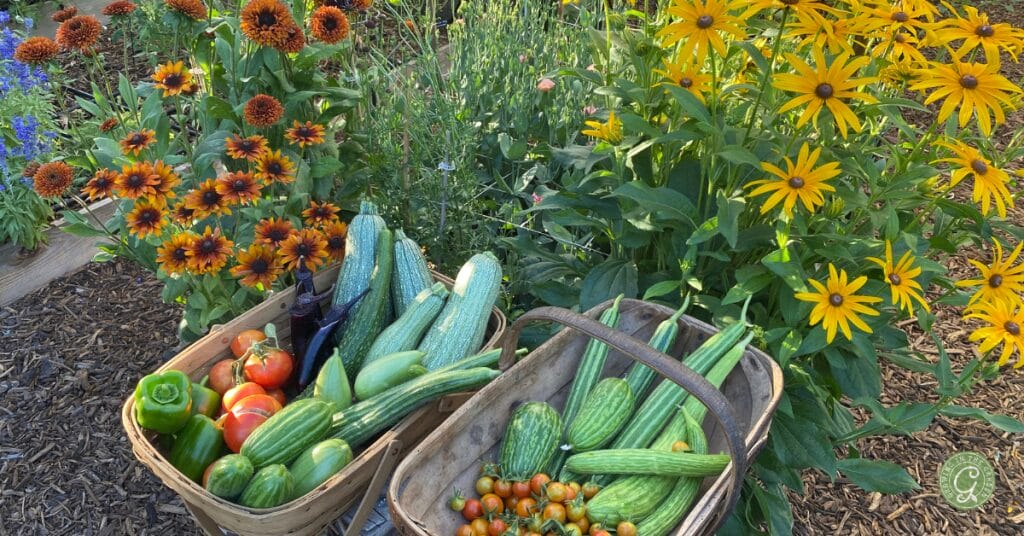
Although I consider myself a vegetable gardener, flowers have become essential to my garden. Flowers are crucial in attracting pollinators like bees, butterflies, and hummingbirds. Pollination is vital for most plants’ growth and the production of fruits and vegetables.
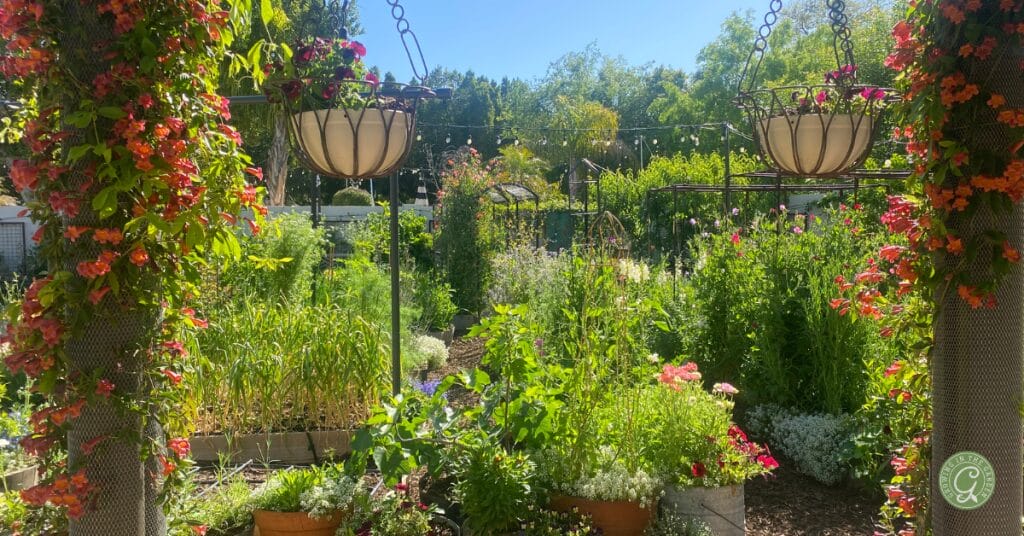
The best part is that growing flowers is simple. Once you understand a few flower-gardening basics, you’ll be ready to grow flowers for their beauty and pollinators. Your vegetables will thank you!
Why plant flowers?
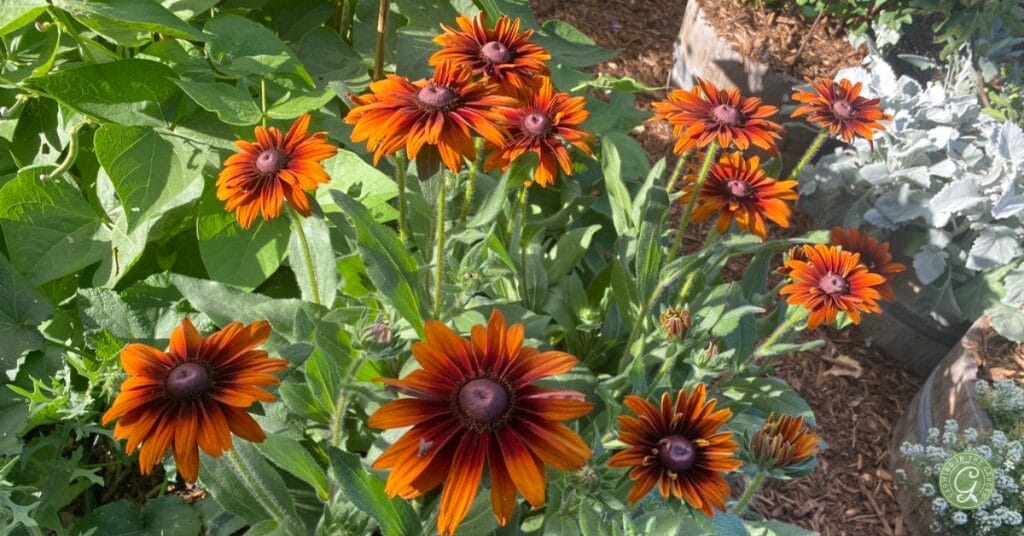
By planting a variety of flowers, you’re promoting biodiversity in your garden. Different species attract different types of insects and birds, creating a balanced ecosystem. Aim to add at least one type of flower to each garden bed.
Many beneficial Insect and pollinator-friendly flowers grow easily from seed. A few of my favorites are alyssum, calendula, coreopsis, cosmos, marigold, nasturtium, Queen Anne’s Lace, sunflowers, zinnia, tithonia, and tansy.
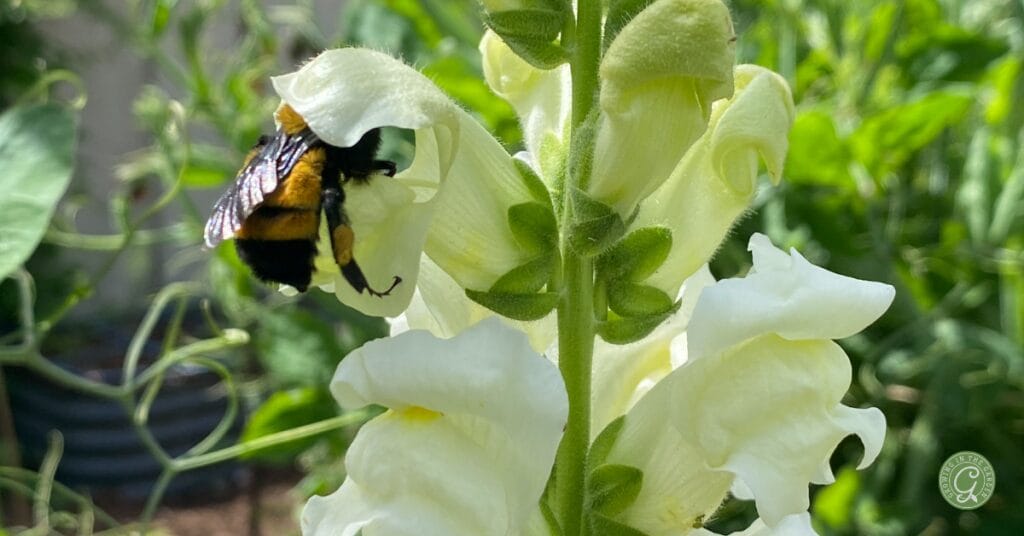
How to grow flowers
The fundamentals of flower gardening are similar to those of vegetable gardening. They include ensuring good soil quality, providing adequate sunlight with some afternoon shade in summer, watering correctly, planting at the right time, and maintaining sufficient spacing between plants.

Read the more than 40 “How to Grow” articles about different flowers for more in-depth information.
Where to plant flowers
You may not feel like there is room in your garden to add flowers. Here are a few ideas for incorporating more flowers into your space.
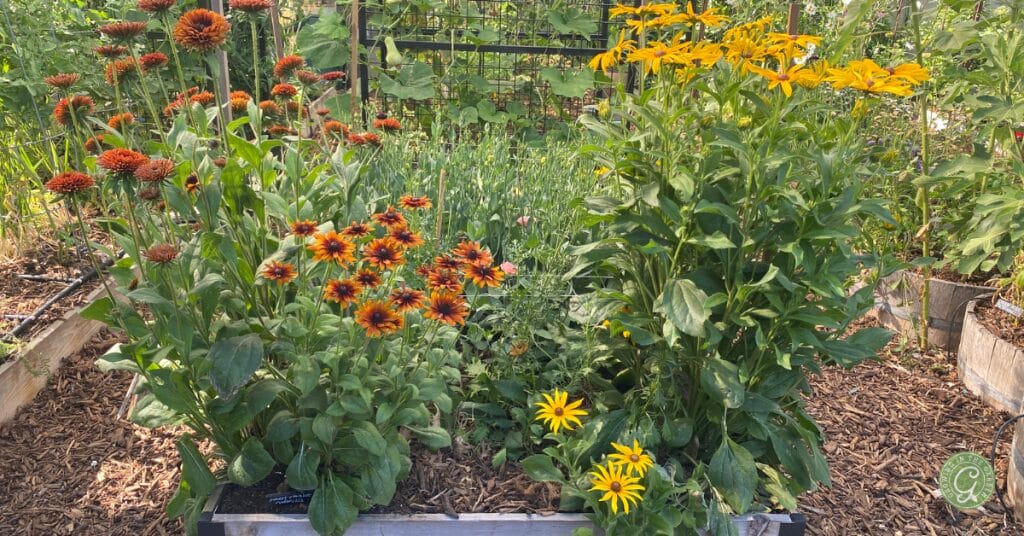
I often reserve the ends of the beds to plant flowers. The flowers are easily visible and add beauty to the garden.
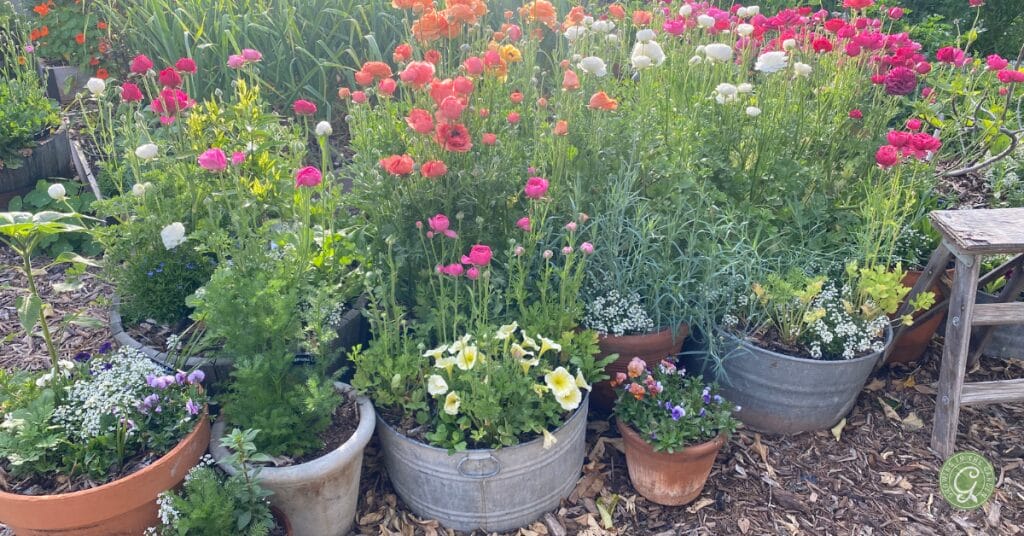
Add containers in and around your garden. Most annual flowers are well-suited for growing in containers.
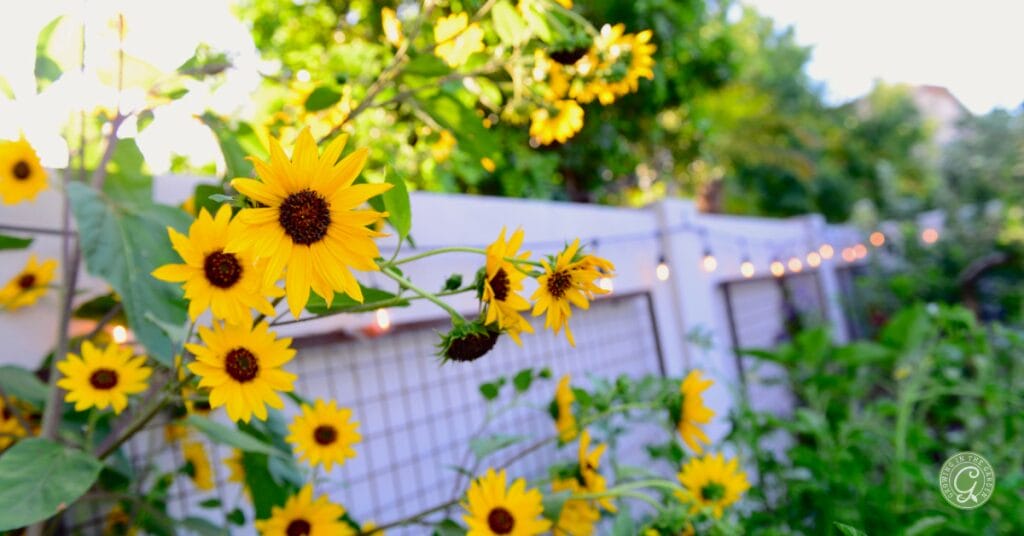
Use the space around your beds. Sunflowers grow well in native soil and provide shade during Arizona’s hot summers. Rather than adding them to the garden beds, I often plant seeds outside them. This also prevents any negative impact from their allelopathic effects.
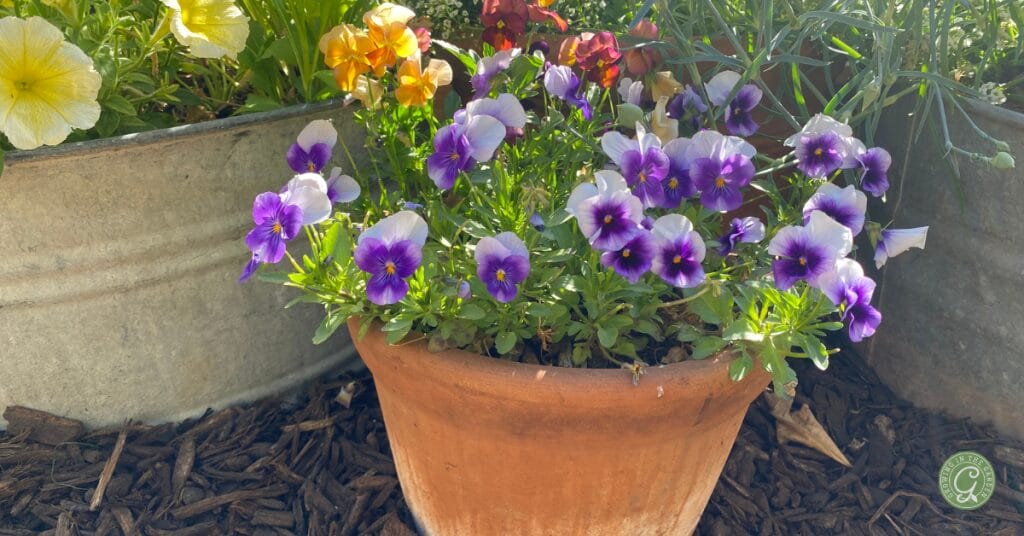
Flower Growing Basics: How to support flowers
Tall plants with heavy blooms may require support to prevent toppling and stem breakage. Support ideas include stakes, bamboo poles, trellis netting, existing trellises, and tomato cages. Get more details about how to use and install trellis netting for cut flowers in this guide.
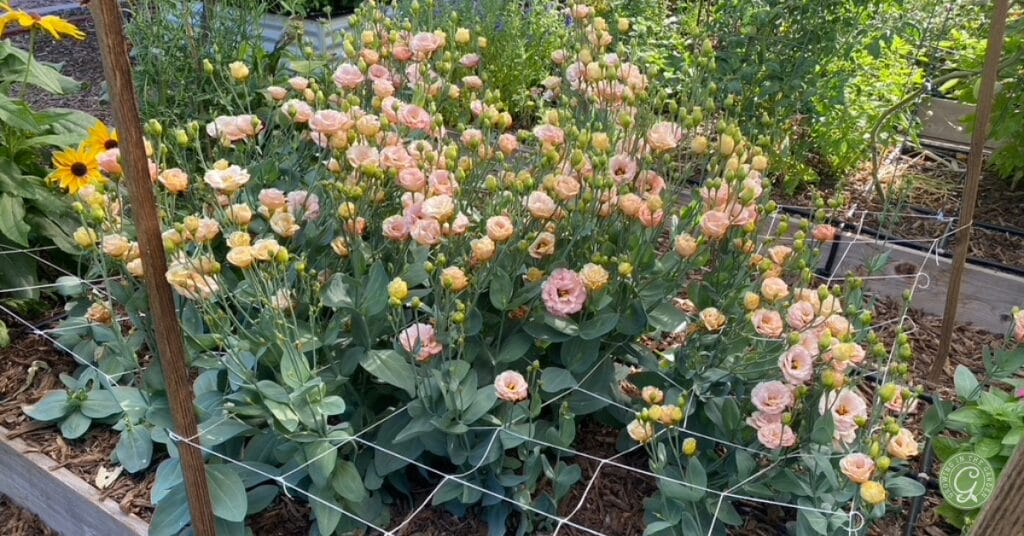

Get more ideas for vertical gardening in this post.
Flower Growing Basics: What is pinching?
Pinching is a technique where a portion of the new plant’s growth is snipped out to encourage branching instead of a single central stem. This is best done when plants have 3-4 sets of leaves. It’s important not to remove over half of the leaves and to cut the stem back to a set of leaves, not a bare stem. This can also encourage longer stems. Learn more about pinching flowers in this blog post.
Flower Growing Basics: Cut flowers
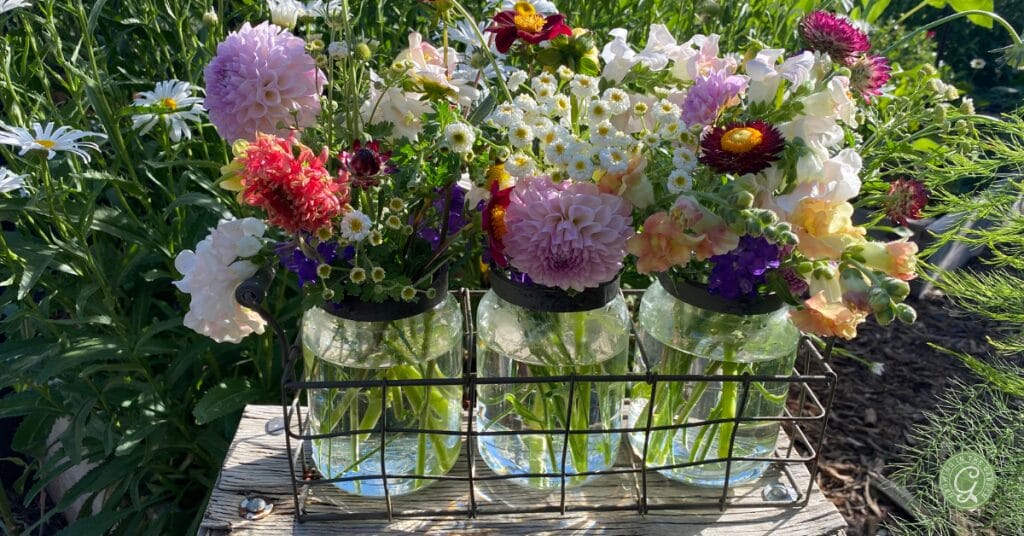
A cutting garden can provide a steady supply of fresh flowers for arrangements without needing an extensive range. Planting different flowers each season and dedicating a part of each bed to flowers can help maintain this variety. Learn more about how to make quick and easy flower arrangements in this post.
Try to have a mixture of focal flowers, disk flowers, spike flowers, filler flowers, and foliage each season.
- Focal flowers: Lisianthus, sunflower, tulip, rose, daffodil, zinnia, ranunculus, dahlia
- Disk flowers: Cosmos, rudbeckia, marigold, phlox, daisy, echinacea, strawflower, gaillardia, calendula
- Spike flowers: Foxglove, delphinium, snapdragon, stock, amaranth, celosia, salvia, bee balm, clarkia
- Filler flowers: Globe amaranth, Queen Anne’s Lace, coral vine, bachelor buttons, feverfew, statice, verbena, bupleurum, scabiosa
- Foliage: Artemisia, dusty miller, basil, eucalyptus, lemon verbena, mint, oregano, perilla
How to harvest flowers for cut flowers
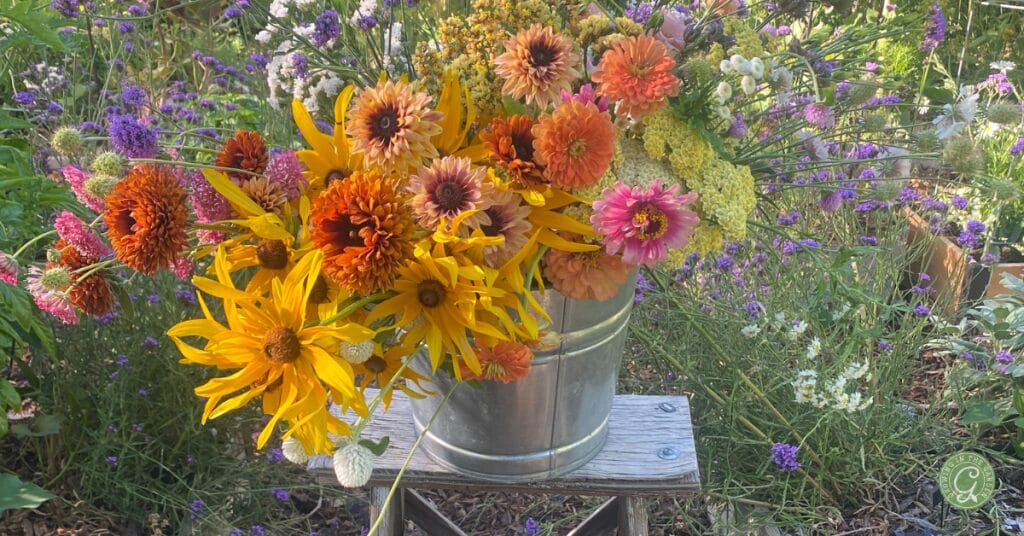
How and when you harvest flowers determines their beauty and vase life. Follow these principles to enjoy your cut flowers longer.
- Harvest flowers before they are pollinated. Pollination tells flowers to shift their focus from blooming to producing seeds.
- Many flowers continue to open once picked. Generally, pick flowers when they are ⅓ open.
- Harvest most spike flowers when the bottom ⅓ of flowers are open.
- Harvest foliage stems when they begin to stiffen, and the ends do not flop over.
- Use clean, sharp snips to harvest flowers. Dull clippers can crush the stem.
- Completely clean pails and vases before using hot, soapy water. Small dirt particles can clog stems.
- Harvest in the morning when temps are cool, and the moisture level of plants is highest.
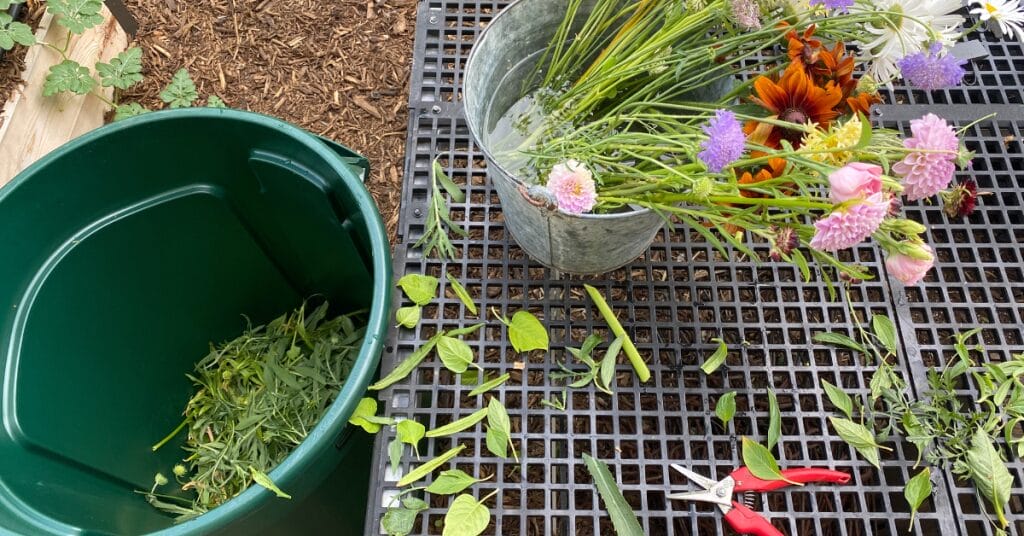
After Harvesting:
- Strip leaves from the bottom ⅔ of the stems and immediately place the stems in a pail of water.
- Bring the buckets of flowers and foliage inside and allow them to rest for an hour or so to rehydrate the stems.
- Fill a clean vase with ¾ water, and add a packet of flower food.
- Trim the bottom 1/2-1 inch (1-2 cm) of stem off and place in a clean vase.
- Ensure all leaves are removed below the water line.
- Refill the water as needed.
- Replace the water if it becomes cloudy.
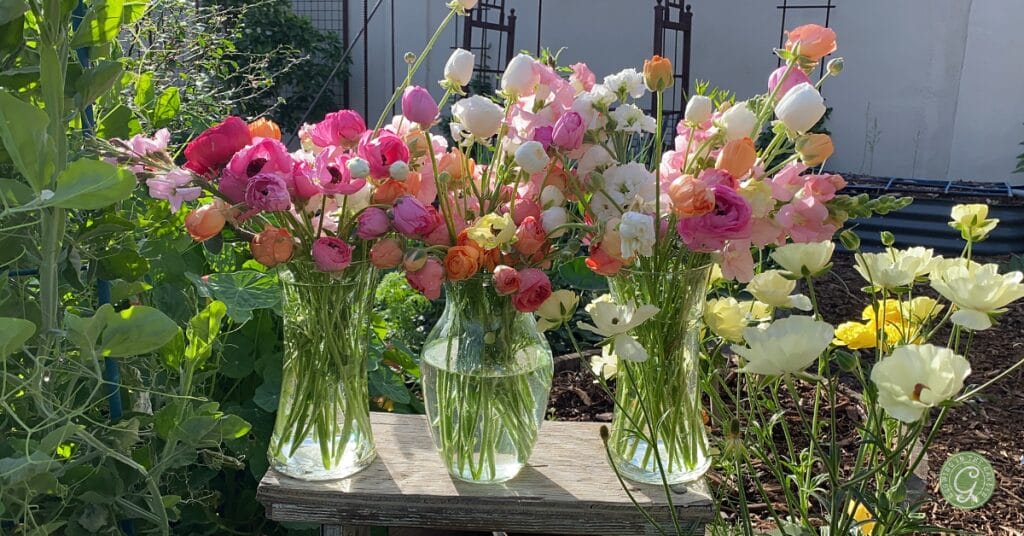
Flower Growing Basics: What about bulbs?
Flower bulbs like tulips (or corms, rhizomes, and tubers) need specific care when planting, growing, and storing. They require good soil and drainage and should not be overwatered to avoid rotting. After blooming, allow bulb flower leaves and stems to die completely before lifting bulbs or trimming back.
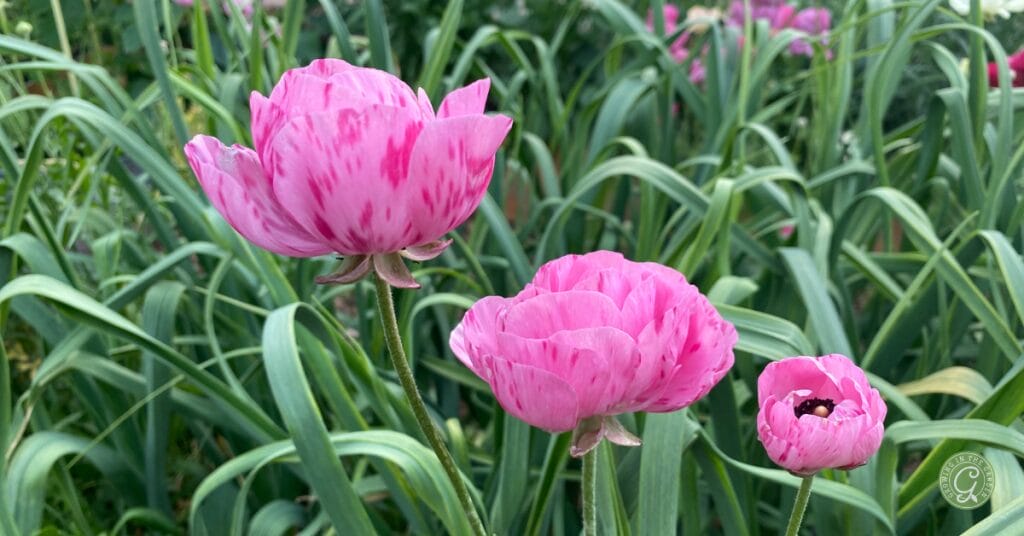

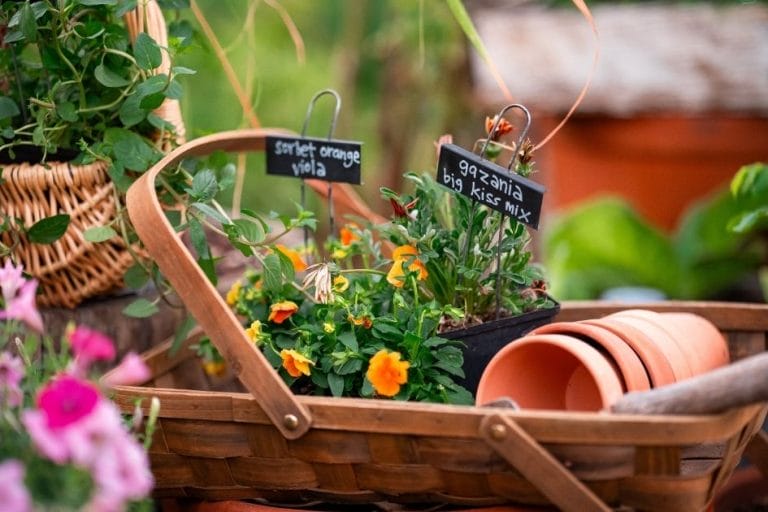



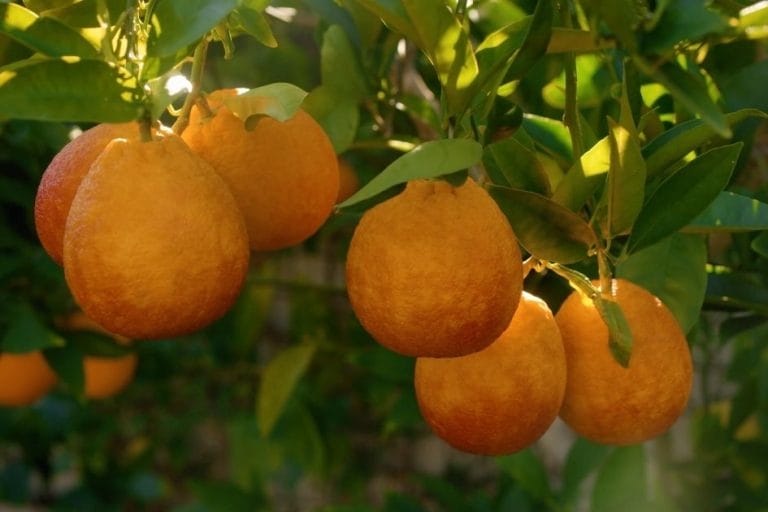
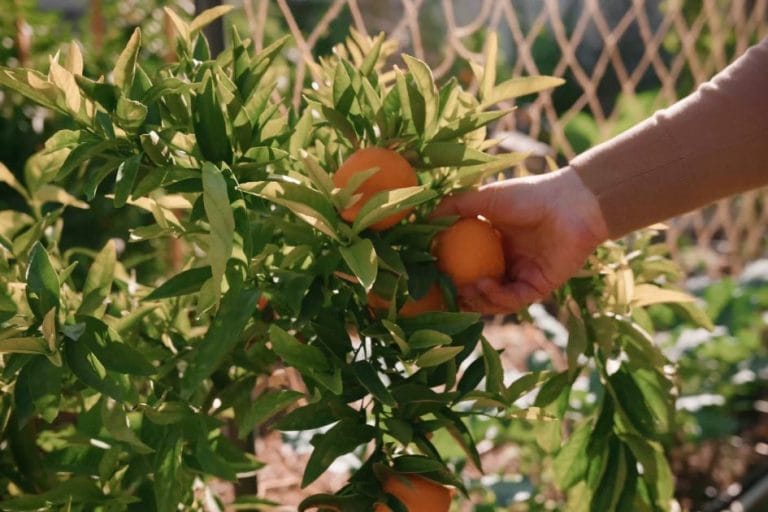
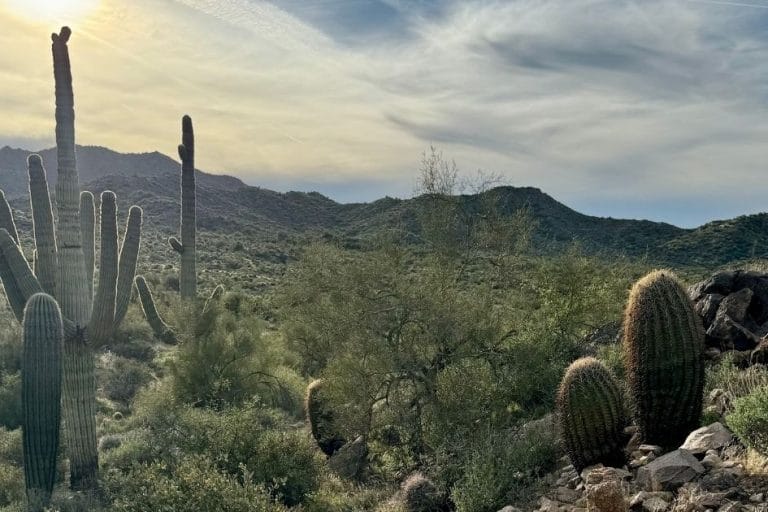
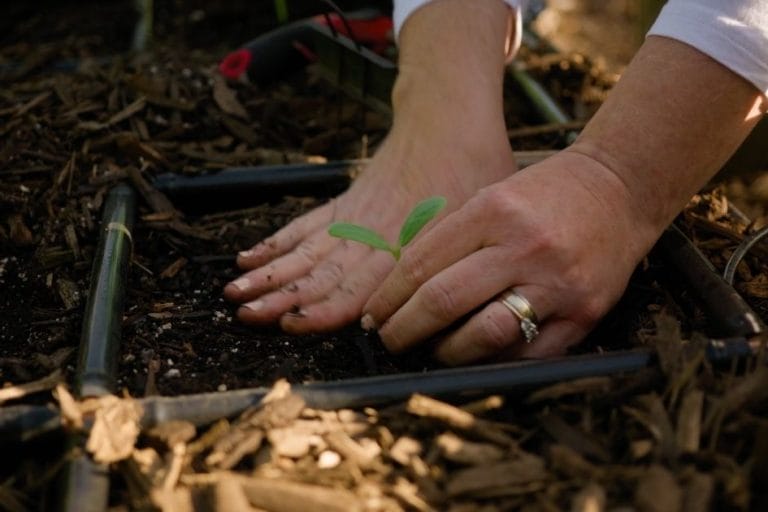
Leave a comment on Flower Gardening Basics